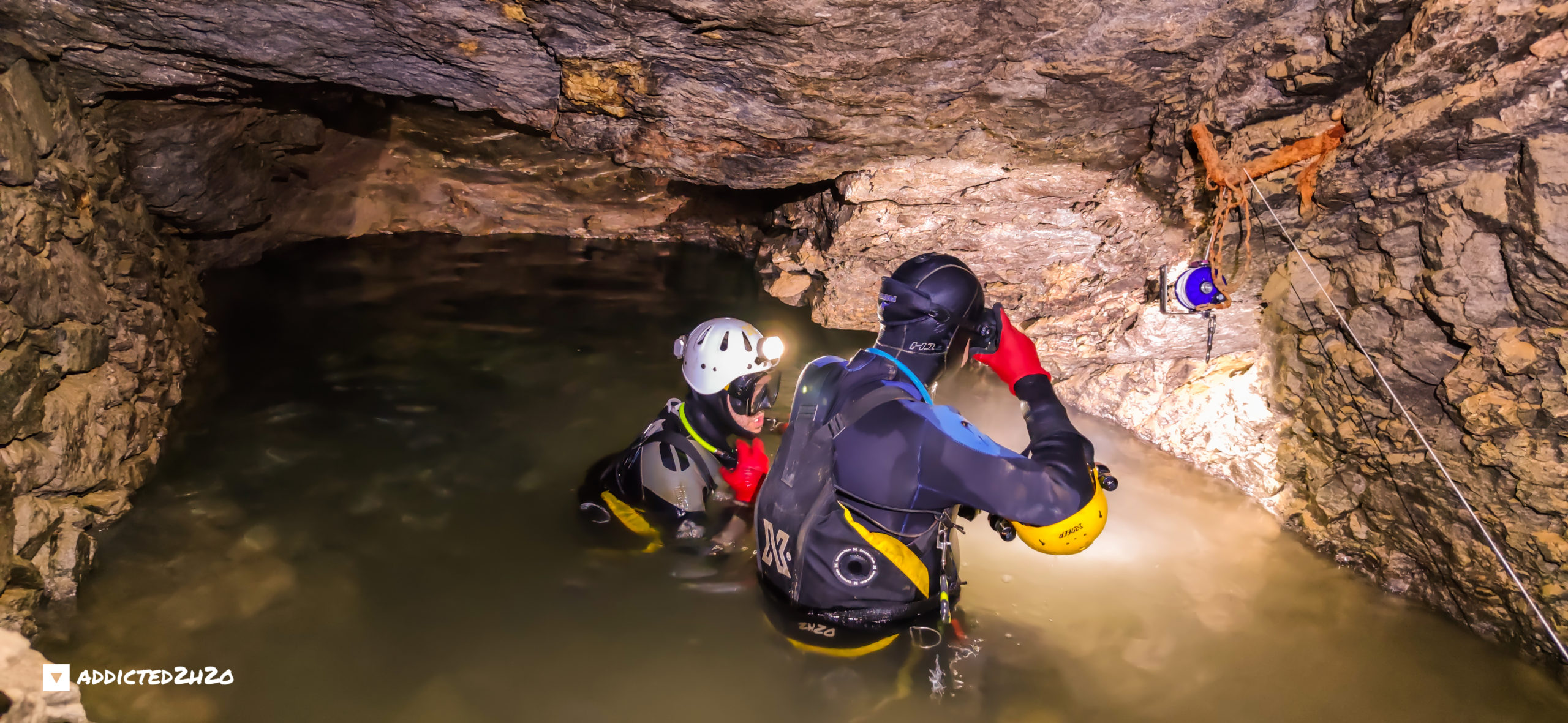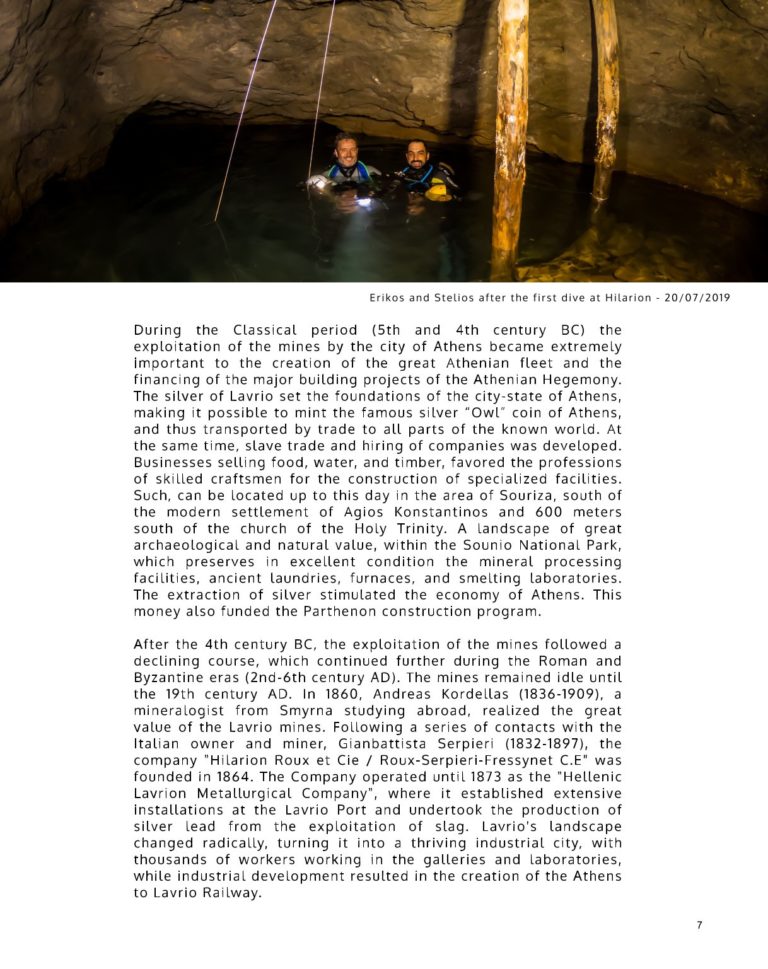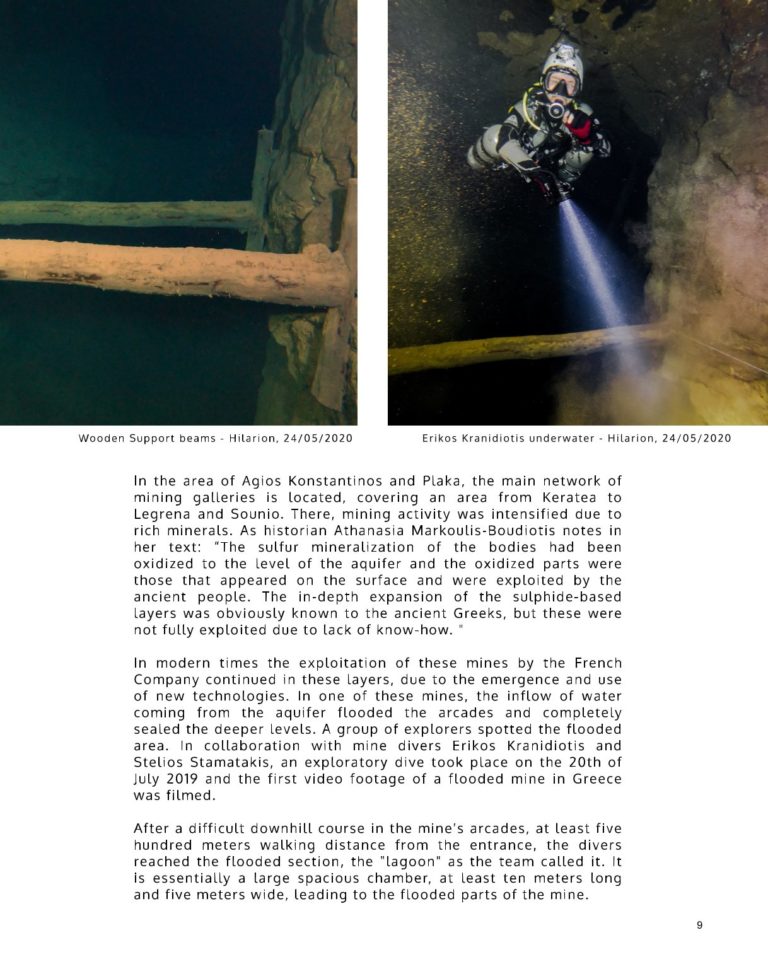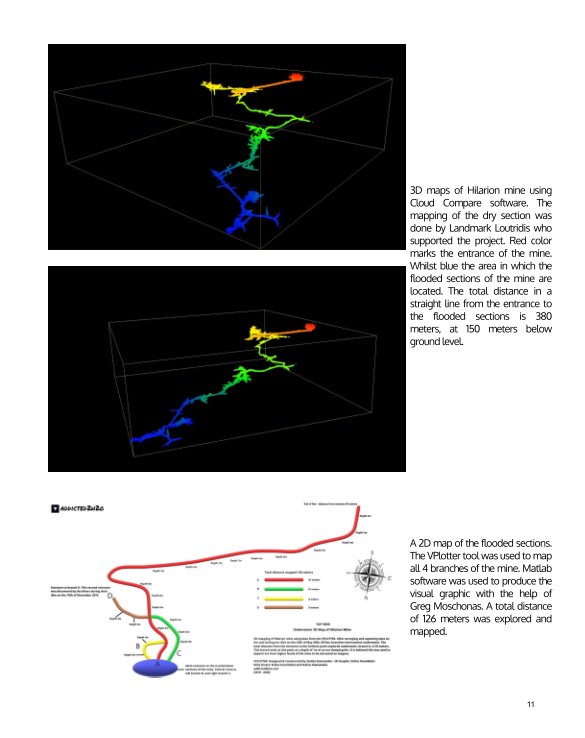LAVRIO MINES
Underwater
The book was written following the successful completion of the first phase of the Lavrio Mines underwater exploration, which took part in 2019 and 2020, and will accompany the film documentary to be released in 2021. It comprises of stories from each of the ten mines including historical information on each site the team explored. Images from the expedition, 3D maps from two of the mines which were mapped, and a firsthand account on the challenges faced by the authors to complete highly demanding dives in a very difficult and somewhat extreme environment. This first edition of the book is written in English and the team has future plans to translate the book into Greek, in a second edition.

Erikos Kranidiotis & Stelios stamatakis
The discovery of a flooded arcade and the need for further exploration led cave divers Erikos Kranidiotis and Stelios Stamatakis to explore these galleries further. In 2019 and 2020, exploratory dives were carried out in several sections of the mines at Lavrio in Greece, capturing amazing images of these underwater galleries for the very first time. Lavrio was a center of attraction for mining activities since the ancient times. The geologic activity between the Eurasian and African tectonic plates formed the Attica-Cyclades Geological Arc, essentially making Lavrio a mineral-rich area. The ore veins were already visible superficially from the Neolithic Age. The first organized inhabitants of Attica extracted natural copper from the galleries of Thorikos to manufacture tools. Mining activity intensified from 3200 BC and reached its peak in the 5th and 4th century BC in the time of the Athenian Republic, making Lavrio and its surrounding area an industrial center of antiquity. After centuries of neglect, the mines were reopened in the 19th century, industrial activity supported the Greek state economy, and the Lavrio Mining Companies were the industrial superpowers of this era until almost the late 20th century.







Do what you can’t